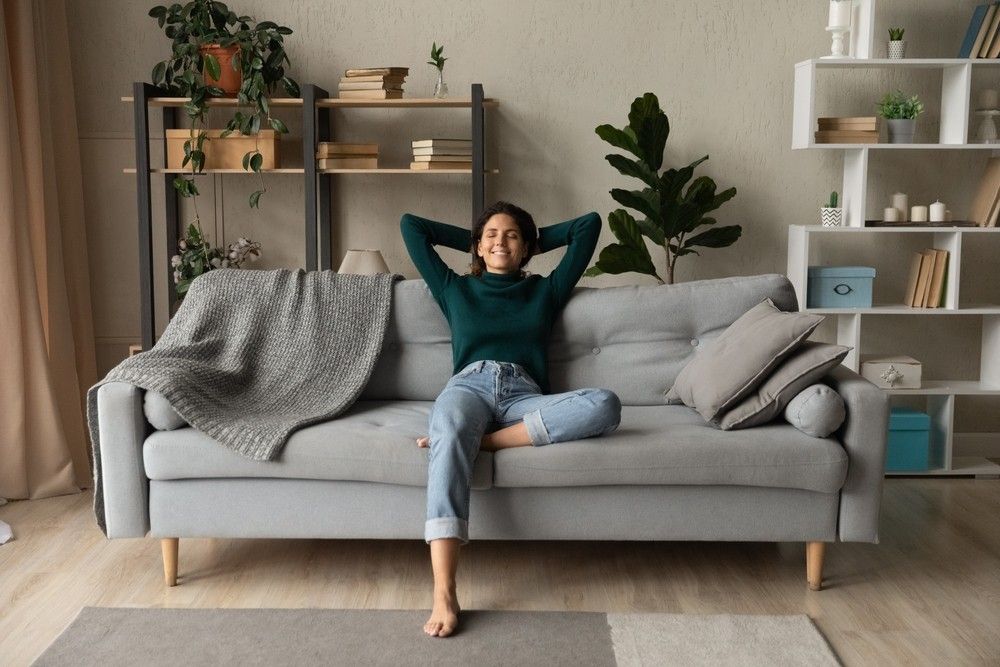

In today’s fast-paced world, creating a home environment that nurtures mental well-being has become increasingly important. Our living spaces significantly impact our psychological health and emotional balance. Let’s learn more about this topic below with Dinosaur Game.
The relationship between our living environment and mental wellness is profound and scientifically proven. Research shows that thoughtfully designed spaces can reduce stress, anxiety, and depression while promoting relaxation and emotional stability. Natural light, color psychology, and spatial organization all play crucial roles in creating a mentally nurturing home environment. Converting your living space into a sanctuary for mental health doesn’t require extensive renovations or expensive modifications.
The key lies in understanding how different elements of home design affect our psychological state and making intentional choices that support emotional well-being. From the arrangement of furniture to the selection of decorative elements, every decision can contribute to creating a more mentally supportive environment. The goal is to establish a space that promotes both functionality and emotional comfort.
Read more: Daily Habits of People With Beautiful Homes
Natural light is a powerful mood enhancer and plays a vital role in regulating our circadian rhythm. Maximize window exposure by keeping curtains open during daylight hours and positioning furniture to allow light flow. Consider installing mirrors strategically to reflect and amplify natural light throughout your space. If privacy is a concern, opt for translucent window treatments that filter light while maintaining seclusion.
Color psychology significantly impacts our emotional state. Choose calming colors like soft blues, gentle greens, and warm neutrals for primary living spaces. These hues have been shown to reduce stress and promote relaxation. Avoid overwhelming spaces with bright or dark colors, which can create feelings of agitation or heaviness. Instead, use bold colors as accents to add interest without dominating the space.
Establishing clear boundaries between work, rest, and leisure areas helps maintain mental clarity and work-life balance. Even in small spaces, using furniture arrangement, room dividers, or area rugs can define distinct zones. This spatial organization helps our brains associate different areas with specific activities, making it easier to focus when working and relax when resting.
Include a dedicated relaxation space, whether it’s a reading nook, meditation corner, or simply a comfortable chair by a window. This area should be free from work-related items and electronic devices, serving as a sanctuary for mental restoration. Consider incorporating elements that promote mindfulness, such as comfortable seating, soft lighting, and calming artwork.
Biophilic design, which connects interior spaces with nature, has been shown to reduce stress and improve mental well-being. Introduce houseplants of varying sizes and types to purify air and add life to your space. Choose low-maintenance varieties if you’re new to plant care. Natural materials like wood, stone, and bamboo can bring warmth and organic texture to your environment.
Create views of nature where possible, and if natural views aren’t available, consider nature-inspired artwork or photographs. The sound of flowing water from a small fountain or the gentle movement of air through plants can create a calming atmosphere. These elements help maintain a connection to nature, even in urban environments.
Physical clutter often leads to mental clutter, affecting our ability to focus and relax. Implement practical storage solutions that make it easy to maintain order. Choose furniture with built-in storage, utilize vertical space with shelving, and regularly assess belongings to prevent accumulation. The goal is to create an environment where everything has its place, reducing visual chaos and mental stress.
Develop simple organizational systems that work with your natural habits rather than against them. This might include creating designated spots for frequently used items, implementing a daily five-minute tidying routine, or maintaining a donation box for items you no longer need. Remember that organization should serve your mental well-being, not become an additional source of stress.
Beyond natural light, artificial lighting plays a crucial role in supporting mental health. Layer lighting with ambient, task, and accent sources to create flexibility throughout the day. Install dimmer switches to adjust light levels according to activities and time of day. Warm lighting promotes relaxation in the evening, while cooler, brighter light supports alertness during productive hours.
Consider the placement of lights to eliminate harsh shadows and create a welcoming atmosphere. Smart lighting systems can be programmed to align with your natural circadian rhythm, gradually brightening in the morning and dimming in the evening. This technological integration can support better sleep patterns and overall mental well-being.
Read more: How to Create a Calm and Cozy Home Sanctuary
Address all senses when designing your space for mental wellness. Include soft textures through pillows, throws, and rugs to create tactile comfort. Consider acoustic elements like area rugs, curtains, or sound-absorbing panels to manage noise levels. Pleasant scents from essential oil diffusers or natural materials can create a calming atmosphere.
Temperature control and air quality also significantly impact comfort and mental state. Ensure proper ventilation, maintain consistent comfortable temperatures, and consider air purification systems to create optimal conditions for mental well-being. These environmental factors contribute to creating a space that feels nurturing and supportive.
Creating a home environment that supports mental health is an ongoing process of thoughtful design choices and mindful adjustments. Focus on implementing changes gradually, observing their impact on your well-being, and refining your space accordingly. Remember that the goal is to create a living environment that feels authentic to you while supporting your mental and emotional needs.
The investment in designing a mentally supportive home environment pays dividends in improved well-being, reduced stress, and enhanced quality of life. By incorporating these design principles and maintaining awareness of how your space affects your mental state, you can create a home that truly nurtures your psychological health and promotes overall wellness.